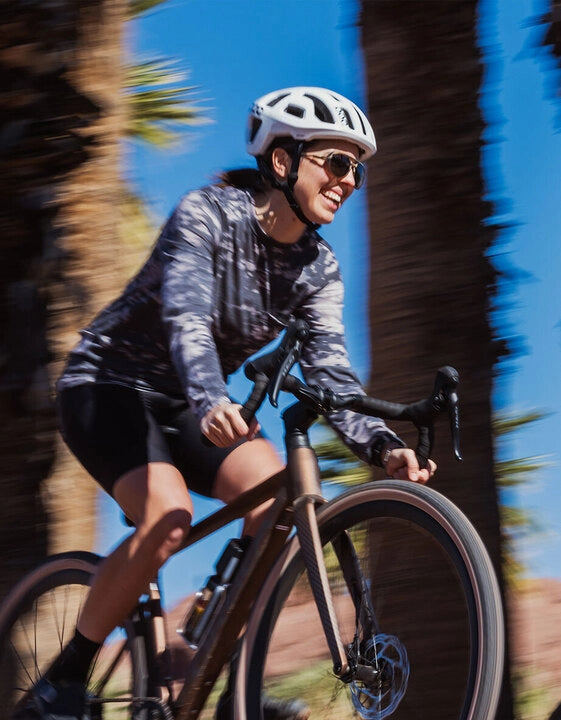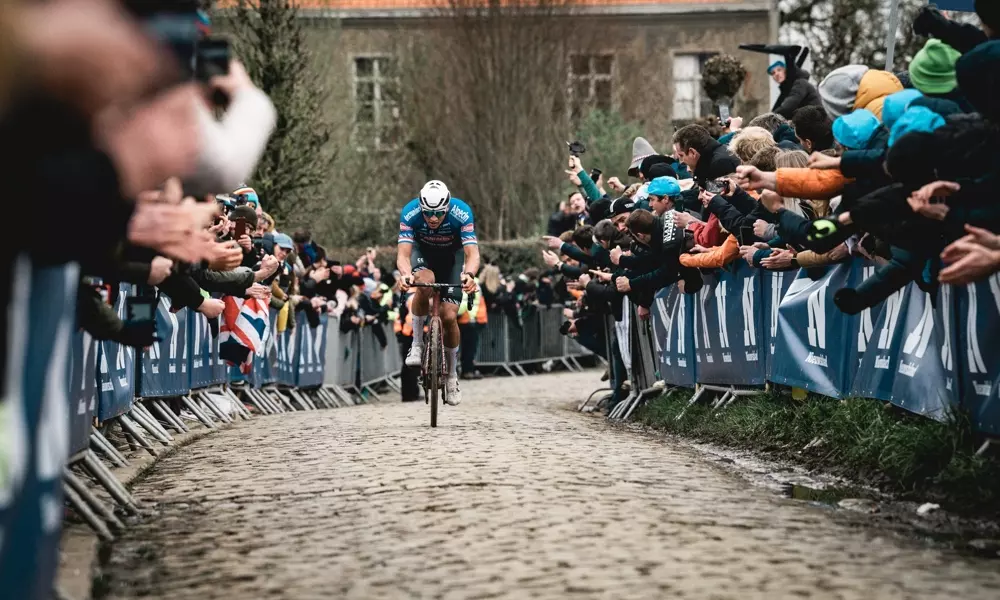A scary tough climb, a scary fast descent, a scary technical trail, a scary race — in these cases, overcoming your fears can be incredibly satisfying and fun. But it’s never good to be afraid of your own bike.
Some bikes and components are just too frightening to enjoy. In the spirit of Halloween, I’m listing some of the top bikes and components, past and present, that have struck fear in the hearts of riders everywhere. (Or at least they scare me.)
[button]Shop Bikes[/button]
Marin and Polygon NAILD R3act Bikes

The Marin Mount Vision
Like Baba Yaga, the NAILD R3act bikes are known by many different names — the Marin Mount Vision, the Marin Wolf Ridge, and the Polygon XQUARONE — these full-suspension mountain bikes all use this uniquely terrifying rear suspension design. Before we get too far, I’m mostly joking about this one. The NAILD R3act suspension is in fact very good.
The design uses a slider tube in the bottom bracket area to decouple the suspension from the high anti-squat forces whenever the rear wheel hits a bump. This means the rear suspension always feels supple while providing excellent pedaling efficiency at the same time.
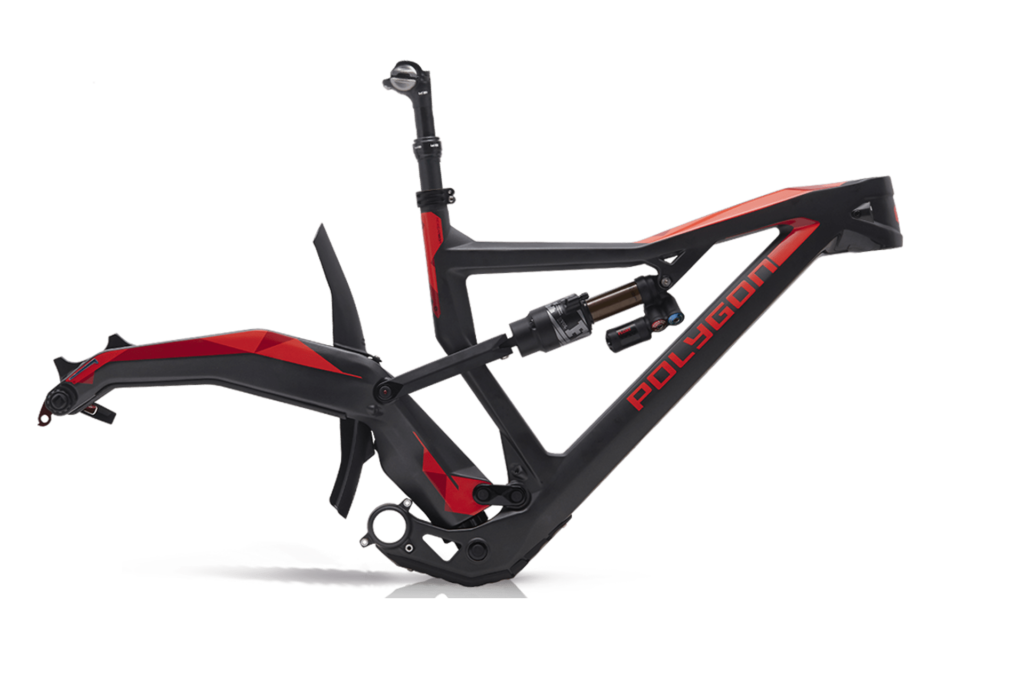 The Polygon XQUARONE frame. Photo: Polygon
The Polygon XQUARONE frame. Photo: Polygon
My only problem with NAILD R3act is the horrifying looks. The engorged swingarm, extreme seat tube angle, and stretched bottom bracket make NAILD R3act bikes look like the grotesque monsters designed by body horror legend David Cronenberg. My greatest fear is not being able to love such a... unique... bike.
The Klein Mantra and Unified Rear Triangle Bikes
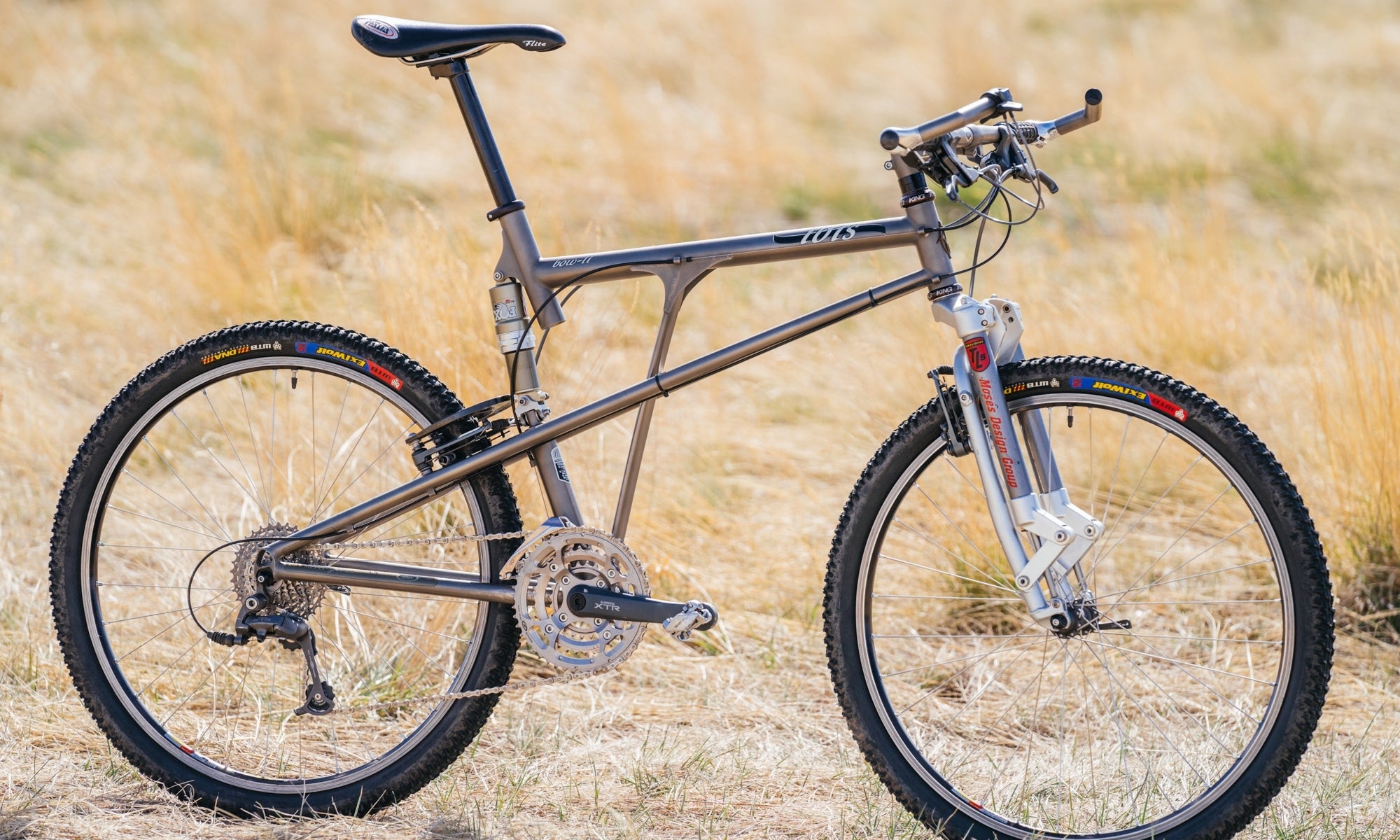 It started out sweet enough with the Ibis Bow Ti. Though that Interloc Racing Design TL-5 fork might be scary on its own.
It started out sweet enough with the Ibis Bow Ti. Though that Interloc Racing Design TL-5 fork might be scary on its own.
Unlike NAILD R3act, the Unified Rear Triangle (or URT) suspension design was actually terrifying to ride. Like many horror creatures, URT started off innocently enough. It even had a cute name: “Sweet Spot.”
John Castellano created the design to eliminate pedal bob by removing the bottom bracket from the front triangle and putting it onto the swingarm. This way, the rear suspension could still soak up bumps while the rider was seated, but it would pedal like a hardtail whenever the rider stood up or really laid down the power. As it entered production and got licensed by manufacturers like Ibis, Schwinn, and Rocky Mountain, it came to be known more widely as URT.
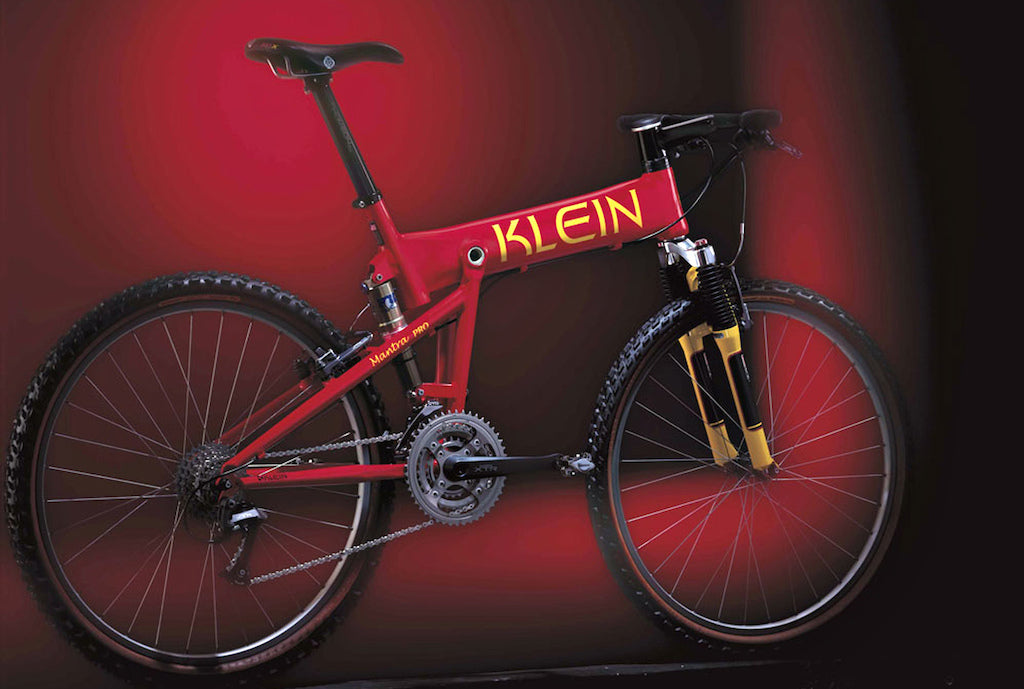 The Klein Mantra took things too far.
The Klein Mantra took things too far.
URT worked, and many riders liked it, but it descended into madness with the arrival of the famous and frightening URT bike, the Klein Mantra. The Mantra was designed by Darrell Voss, the same engineer who would later create the NAILD R3act platform (hmmm…). It simply pushed things too far with 5 inches of rear-wheel travel, a steep head angle, and a high bottom bracket.
 From the Klein catalogue. This rider is on the verge of death.
From the Klein catalogue. This rider is on the verge of death.
When braking on a descent, the rider's weight would push the bottom bracket forward towards the front wheel, extending the shock, shortening the wheelbase, and steepening the head tube angle. This made navigating gnarly and technical downhills unpredictable, sketchy, and downright terrifying. It’s perhaps no surprise then that Trek killed the Mantra after acquiring Klein.
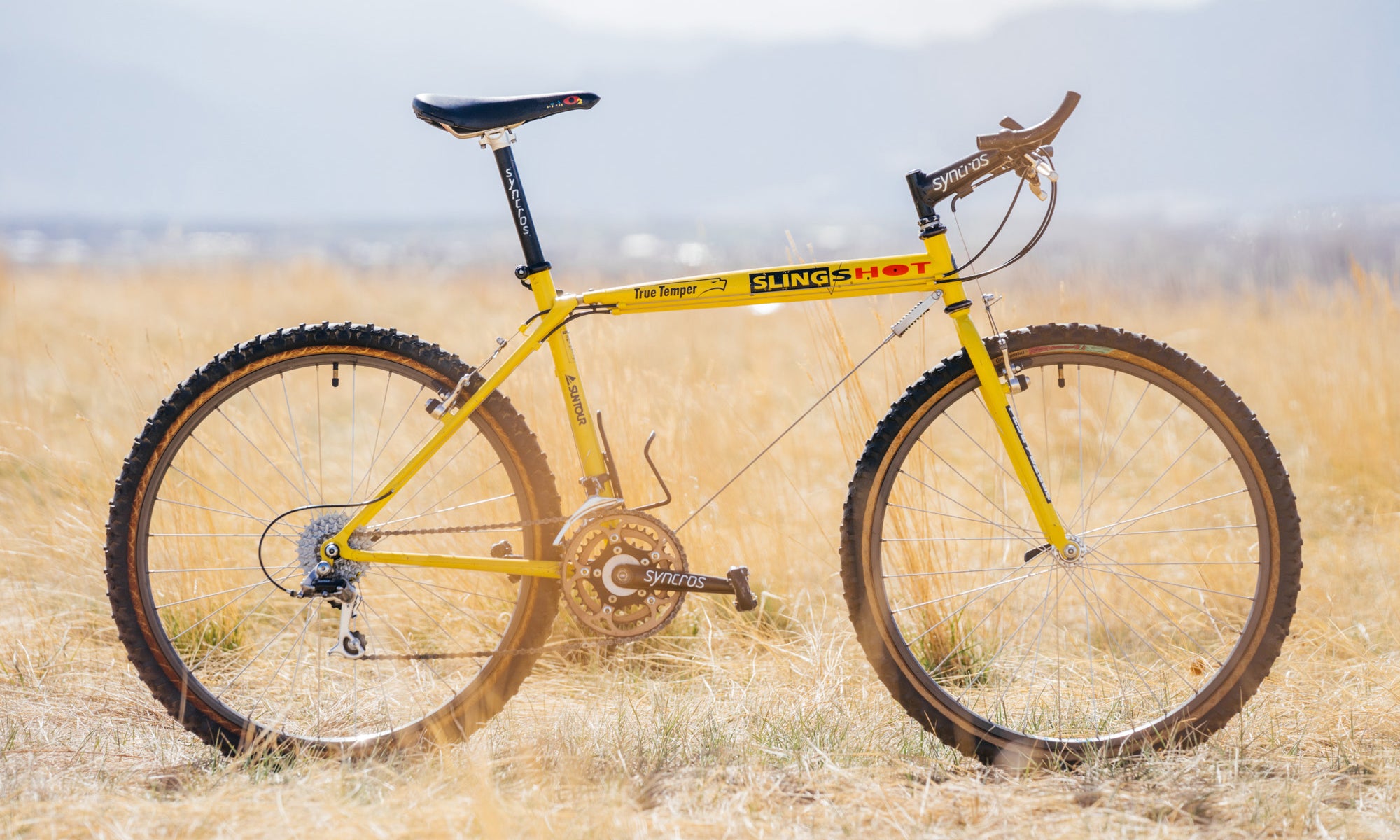 Oh my...
Oh my...
It’s probably worth mentioning that the Mantra isn’t even the most terrifying-looking URT bike of them all. That would be the Slingshot. It used a steel cable and spring in place of a traditional down tube and a hinge on the top tube which allowed the frame to act as a form of suspension. While it looks horrifying, it’s actually much nicer to ride than the Klein Mantra.
I rode a Slingshot Team Issue from the TPC’s museum during a vintage ride. The whole time I was imagining the frame folding in half and killing me, but it actually felt kind of normal because it has so little travel and a relatively slack (for the time) 69-degree head angle. Still, I wouldn’t hit anything gnarlier than a green flow trail on it. Too scary.
The Bob Jackson Racing Tricycle
 Yes, this is a real thing. I didn’t know racing trikes were a thing until this vintage Bob Jackson racing trike came to TPC, and like a cursed VHS tape, I wished I’d never laid eyes on it. Seven days after it entered the warehouse, my curiosity got the better of me and I took it out for a ride. I crashed trying to race around a corner and got a nice dose of road rash on my shoulder and cheek.
Yes, this is a real thing. I didn’t know racing trikes were a thing until this vintage Bob Jackson racing trike came to TPC, and like a cursed VHS tape, I wished I’d never laid eyes on it. Seven days after it entered the warehouse, my curiosity got the better of me and I took it out for a ride. I crashed trying to race around a corner and got a nice dose of road rash on my shoulder and cheek.
This thing was seriously the least controllable bike I’ve ever ridden. The first major problem is that trikes are inherently unstable. Just watch this amazing footage from the 2008 World Tricycle Championship:
You risk tipping over in every corner!
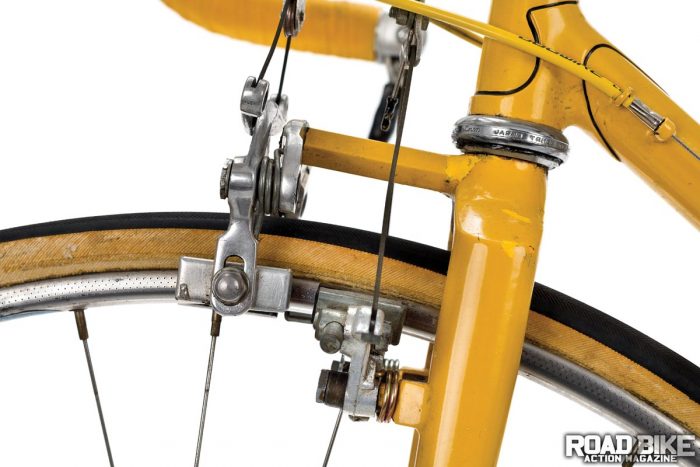 It’s made worse by the fact that the design means rim brakes can only be mounted to the front fork (more modern disc trikes have rear brakes). That means both brake levers are controlling calipers that stop the front. It’s stupid, and super easy to lock up the front and tip over, especially since the vintage center-pull and cantilever calipers (it mixed two different calipers so they would both fit on the fork) had very poor modulation.
It’s made worse by the fact that the design means rim brakes can only be mounted to the front fork (more modern disc trikes have rear brakes). That means both brake levers are controlling calipers that stop the front. It’s stupid, and super easy to lock up the front and tip over, especially since the vintage center-pull and cantilever calipers (it mixed two different calipers so they would both fit on the fork) had very poor modulation.
 Then, the left rear wheel is the only one being driven, meaning the bike constantly wants to turn right. You have to constantly steer to the left just to travel in a straight line. Countersteer a little too aggressively and mess up the balance and guess what — you tip over. Bob Jackson has created many beautiful bikes, but this one is truly evil.
Then, the left rear wheel is the only one being driven, meaning the bike constantly wants to turn right. You have to constantly steer to the left just to travel in a straight line. Countersteer a little too aggressively and mess up the balance and guess what — you tip over. Bob Jackson has created many beautiful bikes, but this one is truly evil.
Screwed and Glued Bikes by Alan and Vitus
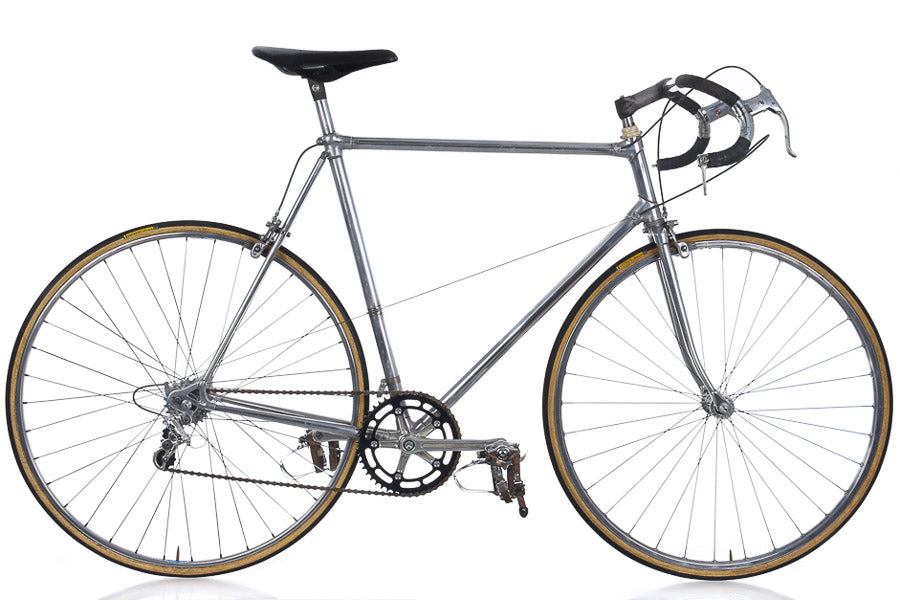 This 1974 Alan owned by Charlie Cunningham felt like a soggy noodle.
This 1974 Alan owned by Charlie Cunningham felt like a soggy noodle.
If you’re not familiar, “screwed and glued” refers to the early construction method for lugged aluminum and carbon fiber frames from brands like Alan and Vitus. Thin aluminum or carbon fiber tubes were bonded to steel lugs with glue or epoxy. I’m not entirely sure where the “screwed” part of the name came from. Supposedly, it’s because the aluminum tubes had grooves (like the grooves on a wooden dowel pin) to give the glue a better hold. More likely, it’s because you might screw yourself up by riding one of these bikes too hard.
The frames were very lightweight but weren’t very stiff. The noodly ride quality didn’t inspire much confidence on fast descents and made the bikes a bit of a handful in tight corners. Heavy riders could flex the rear triangles so much under power that the bike would actually shift on its own (ghostly!).
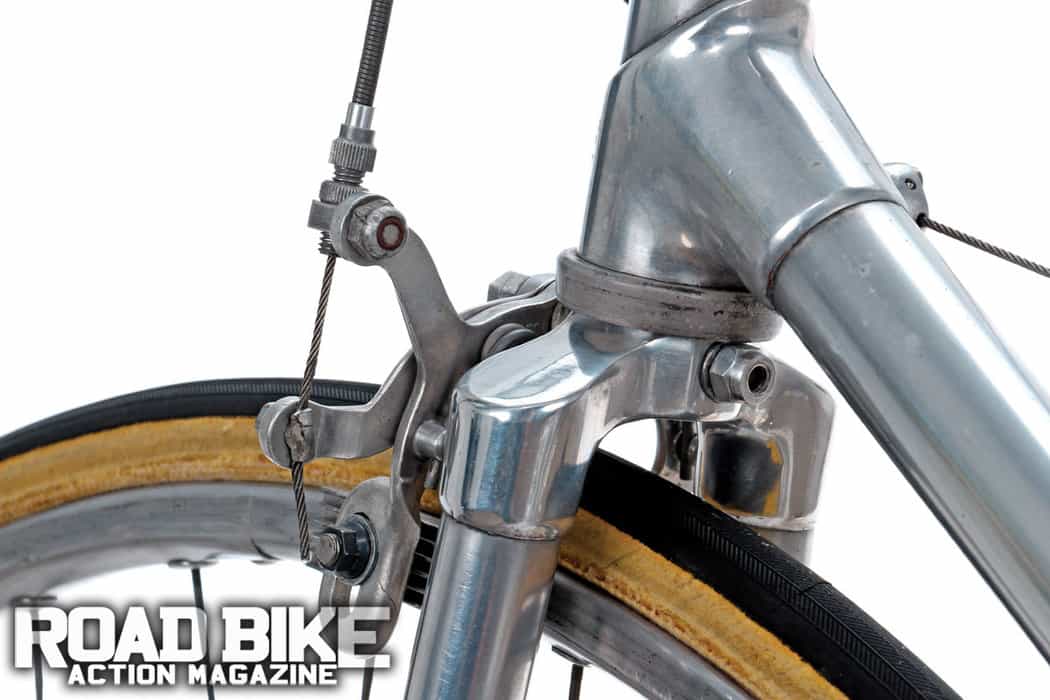 Would you trust this 50 year old screwed and glued headtube joint on a 20+ mph descent?
Would you trust this 50 year old screwed and glued headtube joint on a 20+ mph descent?
Worst of all, the design meant the frames had a more finite lifespan than most. Given enough time and abuse, the bonds between the tubes and lugs will eventually fail, perhaps while you’re riding it. I have no definitive proof of any frame actually failing catastrophically and causing serious injury beyond some internet hearsay and rumors. Such catastrophic frame failures are probably just an urban legend — but so was Candyman.
Josh Bender’s Karpiel Apocalypse
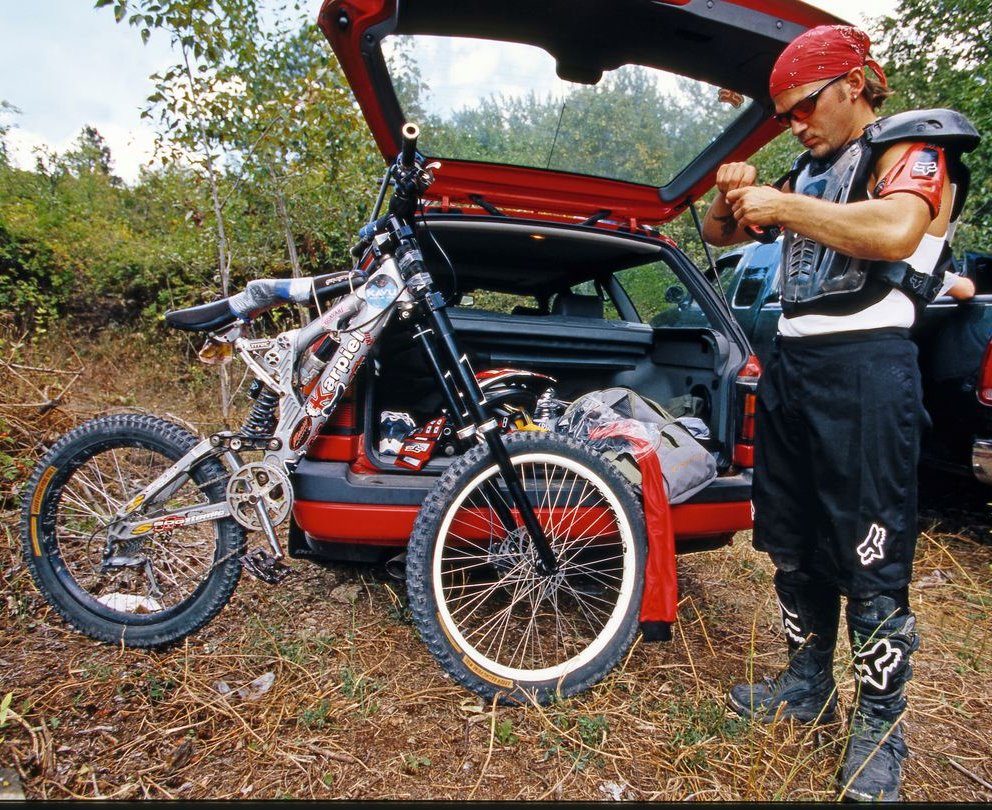 Was there any freerider as insane as the legendary Josh Bender? His riding was straight-up terrifying and his video parts were the mountain bike equivalent of a Saw movie. His numerous crashes and injuries all made me sick to my stomach. In a way, his bikes were instruments of torture.
Was there any freerider as insane as the legendary Josh Bender? His riding was straight-up terrifying and his video parts were the mountain bike equivalent of a Saw movie. His numerous crashes and injuries all made me sick to my stomach. In a way, his bikes were instruments of torture.
Bender had many absurd and iconic bikes, but the one I always think of first is his custom Karpiel Apocalypse.
 It was a 40+ pound tank with 13 inches of rear suspension controlled by two shocks. It had a Marzocchi Super Monster fork that was made just for him with 12 inches of travel. The bike was so comically tall that it needed tiny 24-inch wheels to compensate. And even with all that suspension, he’d still bottom it out regularly and fling his ragdolled body into oblivion. It was pure madness.
It was a 40+ pound tank with 13 inches of rear suspension controlled by two shocks. It had a Marzocchi Super Monster fork that was made just for him with 12 inches of travel. The bike was so comically tall that it needed tiny 24-inch wheels to compensate. And even with all that suspension, he’d still bottom it out regularly and fling his ragdolled body into oblivion. It was pure madness.
 Bender attempted the 55-foot "Jah Drop" 4 times but crashed every time.
Bender attempted the 55-foot "Jah Drop" 4 times but crashed every time.
I can’t imagine riding a bike this crazy on a regular trail, let alone hucking it off the types of features Bender subjected it to. It was a truly scary stuff.
Spinergy Rev-X Wheels
 Legendary sprinter Mario Cipollini helped make Rev-X wheels iconic.
Legendary sprinter Mario Cipollini helped make Rev-X wheels iconic.
If there’s one bike component that’s forever cursed, it’s probably Spinergy’s much-maligned Rev-X wheels. These innovative 4-spoke carbon wheels were super popular in the 90s thanks to their futuristic design, but they became villanized after plenty of horror stories.
In unlucky circumstances, the carbon blades could cut flesh, as they did with Michele Bartoli when he crashed in the 1999 Tour of Germany. He was cut so badly below the kneecap that he collapsed after trying to stand back up and was out for the rest of the season. Two-time world champion Paolo Bettini also nearly cut his hand off. There are even legends of unlucky rabbits being sliced in half after leaping into the spinning blades (okay, that might be a bit far fetched).
 This photo made the rounds back in 2009.
This photo made the rounds back in 2009.
But it was the numerous reports of wheels “exploding” without warning and injuring riders, that really ruined their reputation. Disgraced, the Rev-X was outlawed by the UCI in 2001 thanks to new wheel rules and regulations that introduced an impact test the Rev-X was unable to pass.
 The Rev-Xs on this C40 have carbon X-Braces glued between the spokes, pros like Cipollini requested to strengthen and stiffen the wheels.
The Rev-Xs on this C40 have carbon X-Braces glued between the spokes, pros like Cipollini requested to strengthen and stiffen the wheels.
Some say it was a conspiracy against Spinergy, an upstart American company making big waves in a Euro-centric peloton. Over 20 years later, people still fear the Rev-X. But there are many still being ridden. I have a friend who rides a pair on his vintage Cannondale painted in Saeco red. The dangerous reputation makes them cool apparently.
Carbon Rim Brake Wheels (in the Rain)
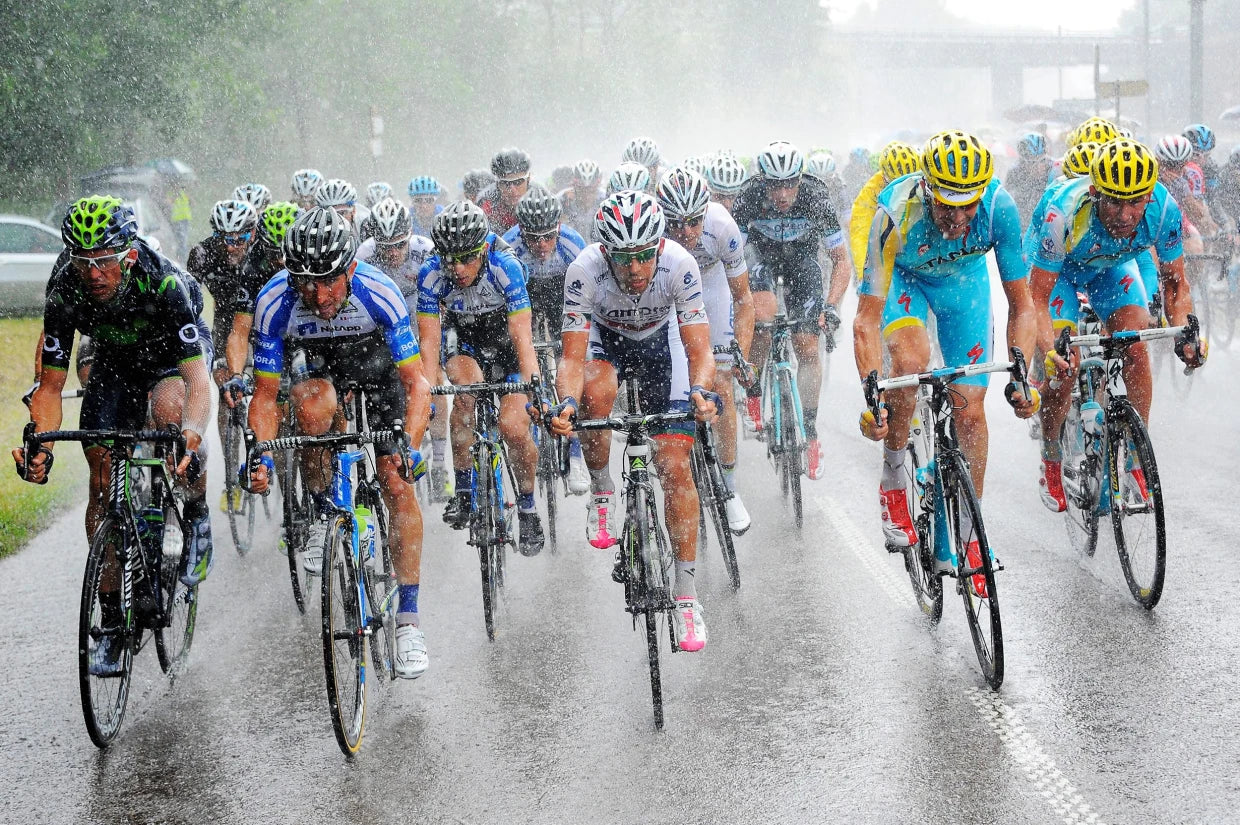 The stuff of nightmares. You want alloy rims for this.
The stuff of nightmares. You want alloy rims for this.
While we’re on the topic of wheels, let’s talk about rim brake carbon wheels. They sucked at braking, and when it was raining, they felt like death traps. I used to refer to my brakes as noise makers. I’m envious of the post-disc brake generation that will never have to experience the spike of fear you get while squeezing your brake levers (and sphincter) with every ounce of strength and feeling the pads slide uselessly over your wet rim before they bite.
Things did get better with time. Companies came out with improved brake pad compounds and companies like Mavic, Zipp, and ENVE added laser-treated and textured brake tracks to improve stopping power. But it was too late for me. I had too many close calls and soiled too many pairs of bibs. Like a coward, I went back to using aluminum wheels until the disc brake revolution came.
The Specialized Command Post
We used to play a game with our bikes that came equipped with the Specialized Command Post dropper. We’d put small objects on the saddle — pens, notepads, apples, etc. — and we’d see how far the Command Post could launch them.
The Command Post was a dropper seatpost that had a reputation for an incredibly violent return when being extended. It’d shoot up like a jackhammer, and the top-out was sometimes so loud that it would echo across the warehouse.
We gave the old Command Post many unflattering names. The most PG was “nutcracker.” You can probably guess what some of the other names were. While none of us actually harmed any soft tissue out on the trail with a Command Post, it was definitely always in the back of our minds. For this reason, it might be the most terrifying bike component of all time.
[button]Shop Bikes[/button]
